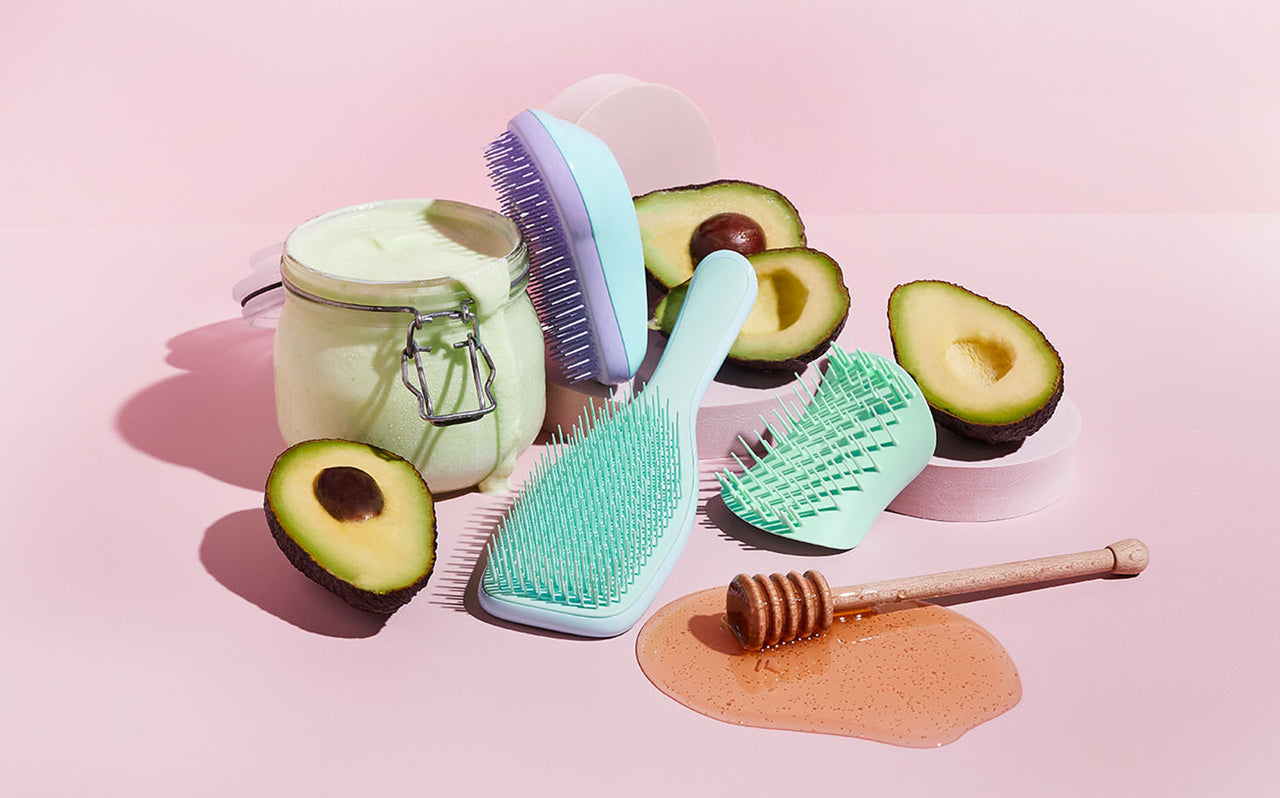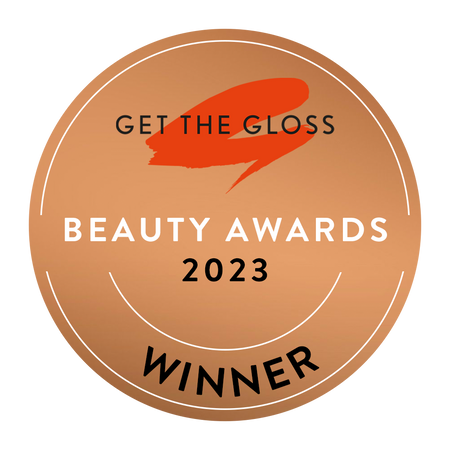Good hair and self care go hand in hand, and when your hair is in need of therapy, a quick wash won’t cut it. If you’re dealing with dandruff, over oiliness or sick of split ends then you need to call in reinforcements in the form of healthy hair remedies. Luckily, two of the most effective treatments for every hair care crisis are hair scrubs and masks, which you can apply - and make! - in the comfort of your own home. Here we show you how...
What is a hair scrub?
If you're going to treat yourself to one hair care extra this year, make it a hair scrub. You’re probably familiar with the idea of body scrubs and we’re sure that exfoliating your face is a part of your regular skin care routine - but scrubs, for your hair? Trust us, it works.
Hair scrubs, also known as scalp scrubs, work exactly the same ways as face or body scrubs in that they exfoliate your skin leaving it happy, healthy and hella smooth. You can buy scalp scrubs or make your own (more on that later!) and use them before or during your shower.
Why use a hair scrub?
Good hair starts with a healthy scalp, so exfoliating the skin on your head can have a huge impact on the look and feel of your hair.
Just as a face scrub can leave you with glowy skin, a hair scrub can help you get seriously glossy hair. But the benefits go way deeper than just a great hair day. Here are just a few:
● Exfoliating your scalp - Just like a body scrub helps to remove dead, dry skin from your arms and legs, a hair scrub can do exactly the same thing for your scalp. Whilst you might not get that ‘run your hand over super smooth legs’ feeling, the benefits can definitely still be felt. Using a scalp scrub can really help to reduce dandruff and relieve that itchy irritated skin that comes with build up. Sweet relief.
● Removes dirt your shampoo doesn’t - Shampoo might be the go-to for washing your hair, but when it comes to doing a deep cleanse - a hair scrub is your biggest ally. Exfoliation doesn’t only get dead, dry skin moving, it can also release any remaining residue that your wash has left behind. Enter healthy, shiny locks.
● Remedy against oily hair - Oily, greasy hair usually starts with an overproduction, or buildup of sebum on the scalp. A hair scrub can lift those oils and wash them right out of your hair, leaving you with super clean hair. If you have naturally oily hair it’s also likely that you’ve dabbled with dry shampoo, which also causes build up on the scalp but, spoiler alert: hair scrubs can help with that too!
Who should use a hair scrub?
The truth is, anyone can benefit from bringing a hair scrub into their life - and their bathroom. However, depending on your hair type you may have different needs from your hair care routine, and should pick a scrub that matches your vibe.
Fine hair can fall victim to product build up and oiliness more than other textures, so you want a gritty scrub that’s still lightweight enough not to drag your do down. For naturally curly hair, you want something that can tackle dry, flaky skin and that’s powerful enough to deal with the heavier products that you use come wash day. However, you also want to ensure that it doesn’t strip the hair of its natural oils (or playing with your curl pattern).
How to use a hair scrub?
Just as a facialist would never recommend exfoliating your face every day, a hair scrub doesn’t need to be done on the daily. Instead consider factoring it into your routine once a week - or every 7 to 10 washes if that works better for your hair type. This will help you really see and feel the benefits, without irritating your scalp.
Here’s our simple guide to getting your scalp scrub on.
1. Start by applying the scrub directly to your scalp. Make sure you remember to apply it to your whole scalp and not just your parting (the scalp at the nape of your neck needs a little love too!)
2. Try to avoid the hair shaft as much as possible as this could make your hair heavy and greasy.
3. You can use your fingertips to massage the scrub into your scalp, but be careful not to catch your sensitive skin with your nails.
4. Alternatively, use the Tangle Teezer Scalp Exfoliator and Massager. Not only will this ensure a seriously deep cleanse, but you’ll get a relaxing head massage at the same time!
5. Use your tool or fingertips to work the scrub into your scalp in circular motions and most importantly, take your time. Rushing could irritate the skin so relax and enjoy a moment of in-shower self care.
6. Gently rinse with water and continue with your usual wash day routine. It’s a good idea to use a clarifying shampoo that will really wash away all the buildup that your exfoliation session may have brought to the surface.
Hair scrub remedies you can make from home
There are many ready-to-go hair scrubs on the market, but you can save yourself some money - and get a bespoke treatment perfect for your hair type - by making your own at home. To get the exfoliation effect, you always want to use a textured base like sugar or salt and then add in other natural ingredients that tackle your key hair health issues. Here are a couple of our favourites:
Jojoba Oil and Brown Sugar Scrub - This scrub is amazing if you are dealing with dandruff and also protects your hair from harmful UV rays. Some people even say it promotes hair growth! Simply mix together jojoba oil, brown sugar and lemon juice and you’re good to go.
Salt, Coconut Oil and Honey Scrub
If you want a really deep clean, this scrub has natural antifungal properties, which cleanse and nourish your scalp and hair and get rid of any excess oil that could cause greasiness. Melt down a tablespoon of coconut oil then add half a cup of salt and a tablespoon of apple cider vinegar and honey.

What is a hair mask?
When you think of an evening of self-care, you probably visualise being wrapped in a robe, with cucumbers on your eyes and a face mask soaking into your skin. But what if we told you that you could - and should - be doing the same for your hair? Whilst scrubs are made to exfoliate, masks are all about moisturising and nourishing.
Like a face mask, you can apply them and then leave them to work their magic whilst you relax. But this just sounds a bit like a deep conditioning treatment, right? Whilst there are similarities, a deep conditioning treatment is there to soften your hair, whilst a mask’s job is to strengthen. If your hair is dry, damaged and in need of some true TLC, a mask is the way to go.
Why use hair masks?
For every hair health problem, there’s a mask that can help. The main benefit of hair masks is that they penetrate deep into the hair cuticle, intensely moisturising the fibres and making hair feel and look healthier. By giving the cuticle some serious hydration, they can also make your hair look shiny, glossy and free from frizz.
Masks are incredible for repairing hair that’s been damaged by sun exposure or too much heat styling and can bring brittle ends back to life in between cuts. They’re also great for healing hair after intense colouring and keeping that colour locked in for longer.
How to use hair masks?
How you use a hair mask will generally depend on your hair type and how much damage you’re dealing with. Generally speaking, it’s recommended to use a hair mask once a week, but that could be increased if you are in a hair care crisis.
You can use a hair mask on wet or dry hair depending on a) your hair type and b) the kind of mask you’re using. For example, many experts say that oil-based masks work best on dry hair as water repels oil.
Using a Hair Mask on Wet Hair
1. Shampoo your hair as usual, then rinse thoroughly.
2. Apply your chosen hair mask! You can use our Wet Detangler to draw the mask through your hair, ensuring every last strand can soak up its magic.
3. Wait three to five minutes. (Pro tip: Use that time to pamper yourself in the shower - shave your legs, treat your skin to a body scrub - the works.)
4. Carefully rinse the mask out, making sure there’s nothing left of it. This could cause your hair to be greasy or weighed down.
5. Towel dry, go through with the Wet Detangler once more, removing any knots and tangles, then style your super strong hair as normal.
Using a Hair Mask on Dry Hair
1. Firstly, if your hair is long or thick, divide it into sections.
2. Apply the hair mask and brush through with our Original Detangler or Naturally Curly Detangler if you’ve got 3C to 4C hair.
3. Wrap your hair in a towel or shower cap. When applying a mask to dry hair you can leave it on longer - as dry hair is less absorbent than wet hair. We recommend around 20-30 minutes or even overnight if you want an intense treatment.
4. When your treatment is over, simply rinse out and style your hydrated and healthy hair as normal.
Hair mask remedies you can make from home
Like hair scrubs, you can save money and get a treatment perfect for your hair type and condition by making them at home - often from things you can find in your kitchen cupboard! There are so many homemade hair mask combos to choose from - but here are a couple of our favourites:
The Coconut Hair Mask
This super simple, coconut oil mask is brilliant for reducing frizz and keeping curly hair looking and feeling it’s best. And the best part? It’s only one ingredient! Just melt down the coconut oil and use it to lather your locs in moisture. You can find out more about it right here.
The Vegan Hair Mask
If you want a mask that’s kind to your hair and the planet, this vegan option is for you, as it strengthens and hydrates without harming animals. Again, turn to coconut oil for your moisturising base, but this time add in shea butter and olive oil for added shine and an incredible scent. Check out the full how to here.
The beauty of hair scrubs and masks is that they both nourish your hair, but in completely different ways. You can use them separately or combine them for the ultimate hair therapy session, leaving you with hair that will glow and gloss from the inside out. You don’t even need to leave the house!












